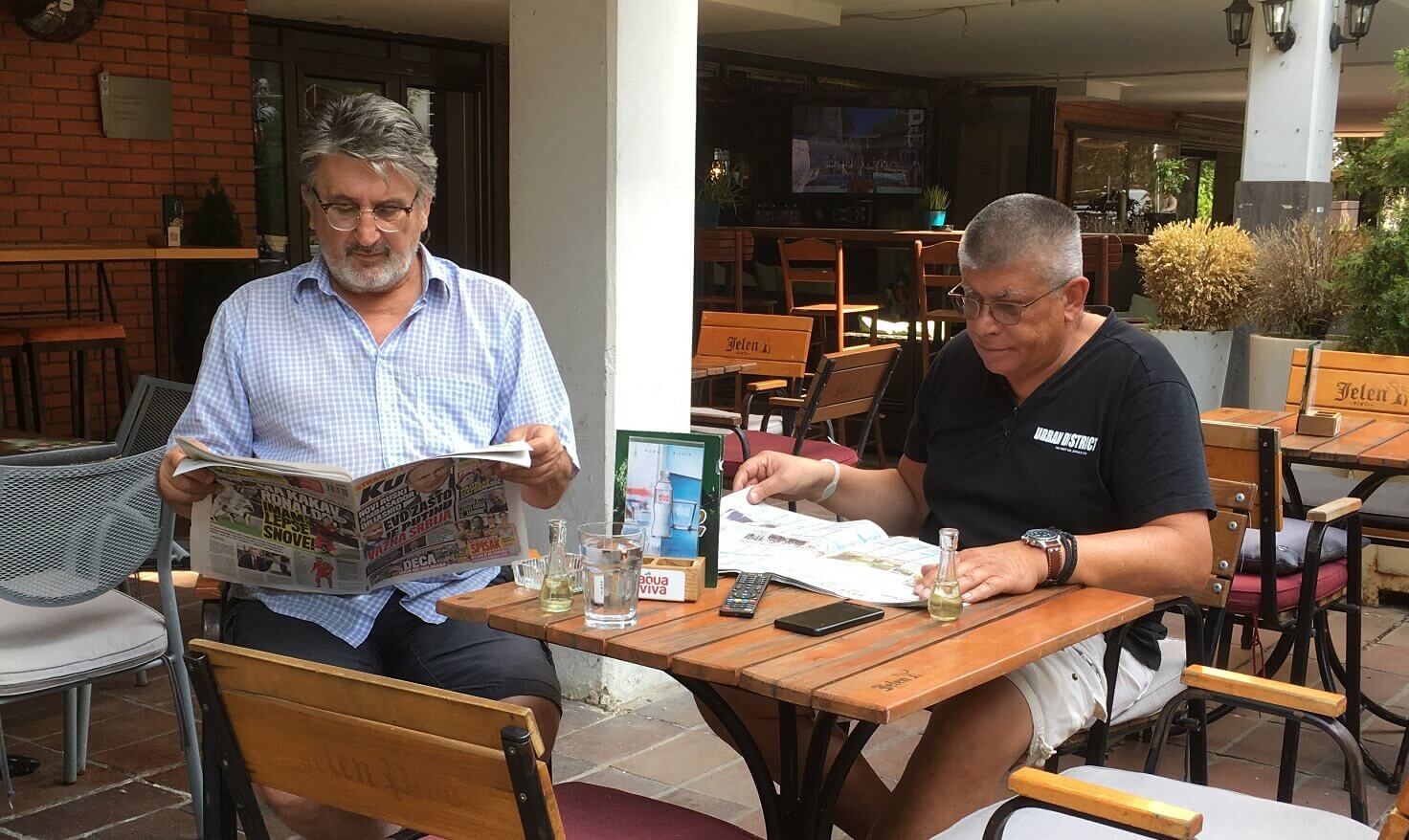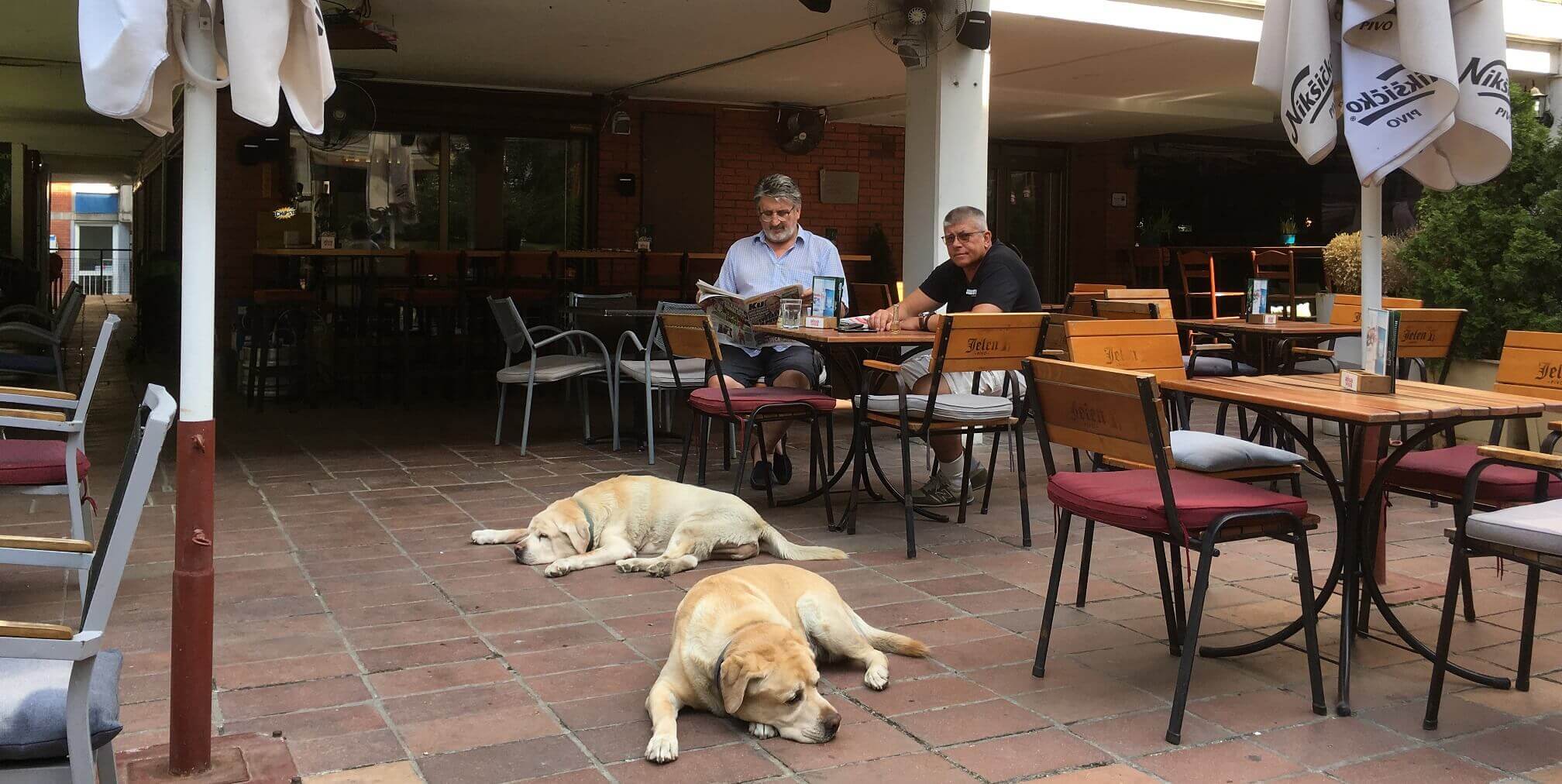The Magnificent Slivovitz – plum brandy
and 11 more even better types of brandy made in Serbia
All about the Serbian moonshine: How to make Slivovitz, plum brandy, 11 more even better fruit brandies made in Serbia, and the special glass rakija is served in.
In September, every village and town in Serbia has the pungent aroma of fermented fruits. When it tickles your nose, follow the scent. You’ll find a brewing cauldron that produces a magic potion: slivovitz, šljivovica (plum brandy), or another type of fruit brandy, rakija.
Fruit brandy production is a practice typical not only for Serbia, but also for the whole of the Balkans, and Europe. Many households in Serbia produce brandy for their own needs. Unlike the American moonshine production, it’s not illegal. However, it is illegal to sell your homemade brandy, domaća rakija.
How to make Slivovitz – šljivovica
The most produced type of brandy in Serbia is slivovitz or plum brandy. Šljivovica is a registered trademark today and the national drink of Serbia. By late August, we have collected ripe plums and put them in a big barrel to ferment, after splitting them in halves and removing the kernels, koštice. (It’s important to remove them, as an accidentally broken kernel could spoil the flavor of your slivovitz.) This mixture of ripe fermenting fruit is called komina. When it’s well fermented, after about two weeks, all sugar from the plums has turned into alcohol.
That’s the moment to invite our friends over for an evening beside the cauldron, kazan. We sit around, drink the previous years’ production, talk and stoke the fire. As the fermented mass boils, its steam passes through a metal pipe. There it cools down to become liquid again and drips in a barrel, ready to cheer us up.
That’s how we make brandy: by boiling and distilling fruit. But we don’t actually say that we ‘boil’ it (kuvati, kuvamo). Rather, the expression is ‘to bake’ (peći, pečemo). We say, “Dođite sutra, pečemo rakiju” (Come tomorrow, we’re baking brandy).
The distillation process first produces the so-called “soft brandy”, meka rakija. We must distill it once more if we want to get the “hot brandy”, ljuta rakija. That’s why it’s called “double-baked”: prepečenica.
The quality of rakija – homemade brandy
Since rakija is a matter of your domaćin’s pride, he’ll offer one of the finest quality. The soft brandy is used during winter to make šumadijski čaj (tea of Šumadija, central Serbian region). That’s basically caramelized sugar boiled in rakija – an excellent drink that will warm you up and get your blood flowing, but also a cure that will chase away the flu.
The drink is transparent and without color when produced. Afterwards, it is stored in wooden barrels, or with a piece of wood inside. And the color the slivovitz will finally get depends on the type of wood.
The rule is to let the brandy “rest”. The older it gets, the better it gets. With time, it loses sharpness and the fruit flavor gets stronger. That’s why we’ll save rakija from important family events (the birth of your child, your wedding, graduation etc.) to taste it decades later, as a special treat for another important event. For example, you can store a bottle of rakija from the year your child was born, only to open it when your child turns 18.
Slivovitz and 11 more types of Serbian brandy
Plums, šljive, are the most common fruit from which we produce rakija . But the same process can be applied to any kind of fruit. And there are other fruit brandies that are actually even more appreciated and more expensive than the slivovitz. Just like šljivovica was named after šljiva, plum in Serbian, the name of other fruit brandies come from the name for the fruits they’re made from.
Any fruit can be used to make rakija. Here’s a list of the most common types made in Serbia, for your reference:
- Komovica – the name comes from komina (see above), as it’s made from the fermented grape pomace left over after making wine. This rakija is strongly appreciated, but not as a drink: it’s a medicine.
- Loza (grapevine) or lozovača – made from grapes directly, without extracting wine. It’s very popular in Montenegro.
- Kajsija (apricot) or kajsijevača
- Dunja (quince) or dunjevača
- Kruška or viljamovka (pear or William’s pear)
Apricot, quince and pear brandy are usually never double baked. Otherwise, they would lose the fine fruit fragrance they have. Occasionally, a fresh fruit is added to the barrel to improve flavor.
A good rakija is often altered with different ingredients and named after them:
6. Travarica – slivovitz with herbs
7. Kleka or klekovača – slivovitz with juniper berries
Then there are liqueurs, likeri – sweet, but still strong drinks, usually consumed in small elegant glasses by women.
8. Medovača – honey brandy
9. Orahovača – walnut brandy
10. Višnjevača – cherry brandy
11. Pelinkovac – liqueur made with pelin, wormwood or artemisia absinthium: yes, the same plant that is used to make Absinth.
My favorite kind of brandy
If you ask which rakija is the best, people will often answer “domaća” (home made). To my taste, apricot and quince rakija are a class above slivovitz. When made by skillful hands, they have a very nice fruit aroma. They’re also more expensive – but they’re worth it.
How to drink rakija
Rakija is never served in big glasses. Rather, we drink it from the smallest shot glasses, less than two inches tall, rakijska čašica. Traditionally, it’s served in a small pear-like glass, like the one in the picture above, taken in my back yard, or the one below, taken in a random neighborhood in Belgrade. It’s called čokanj, fićok, fraklić or unuče – many names for a little glass that is believed to make rakija taste its best.

A Saturday morning: Coffee, newspapers and brandy
In the middle of writing this article, I was on a short business trip in Belgrade. It was an early August morning: the air was already warm, but traces of a fresh breeze offered some relief. Having coffee at a secluded bar that played soft jazz in one of the Slavija’s quiet neighborhoods, I saw two men enjoying themselves silently. Each one of them was reading newspapers with a shot of rakija, as peaceful as their sleeping dogs. They kindly agreed to be featured in my blog post. “If it’s about rakija”, the one with the beard said, “we’re sure in!”
by Magdalena Petrovic Jelic
Founder of Serbonika
Serbian language teacher and entrepreneur, language lover and polyglot, but also a mother and a relentless storyteller.
On a mission to create the best web space for learning Serbian: Serbonika.


Serbonika
Najbolja metoda za učenje srpskog jezika
The best method to learn Serbian
How to Find an Excellent Serbian Language Teacher
How to find a good Serbian language teacher? Not an easy task. When choosing your Serbian teacher, pay attention to the traits that will help you recognize a true talent
Feet Speech: 8 Serbian Leg Idioms for English and Norweigian Speakers
Did you know that many Serbian leg idioms are actually the same in English and Norwegian? That was a surprise for me too!
False Friends in Serbian for Polish Speakers
Some English speakers make jokes about polishing their Polish, but in this article you will learn 16 false friends in Serbian for Polish speakers.
Corona Virus in Serbia Fought by Distance Learning
First cases of Corona virus in Serbia, isolation measures and the 1st experiment with distance learning in public schools – a Brilliant Solution for Quarantine





